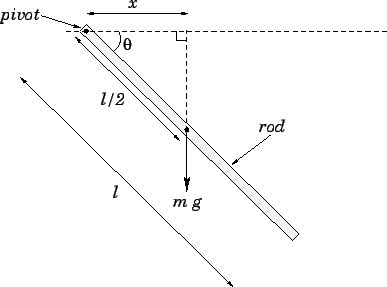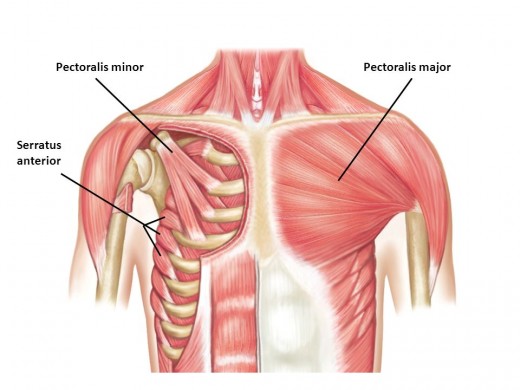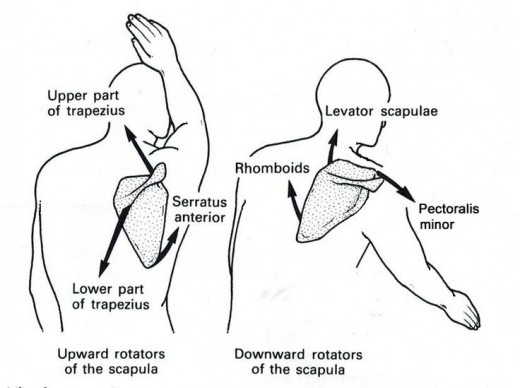A Deeper Look Into Upper Body Muscle Imbalances
What is an Upper Body Muscle Imbalance?
Muscle imbalance is a deviation of the actual relative activity levels from the optimal relative activity levels of the involved muscles, causing compensations, inhibition of muscles and inefficiency in movements. At the upper body, this imbalance can be at the shoulders or elbows. Depending on the severity, an upper body muscle imbalance can spread and cause more imbalances, increase injury risks, cause poor posture and contribute to chronic pain, especially to the neck and upper back region. It is common for everyone to have some form of upper body muscle imbalances, which can be very complex due to the highly mobile shoulder joints.
To illustrate a muscle imbalance simplistically, imagine a rod being pivoted on one end with two strings attached to the rod on the other end. The strings' tension are pulling the rod to pivot in opposite directions. Both strings need to have certain tension in them to stabilize the rod either when stationary or when pivoting in either direction, in different positions and speeds, depending on the rod's weight, center of gravity, position and properties of the pivot. If either string does not have the ability to withstand certain amount of tension, the rod would be unstable under certain circumstances. That would lead to jerky and inefficient movements of the rod as well as wear and tear on the the rod, pivot and the strings.
The rod in the previous paragraph can be someone's upper limb while the two strings can be two different muscles attached to the limb that facilitate movements of the limb. A muscle imbalance would lead to inefficient movements of the upper limb, instability of the joints and greater risks of injury. To minimize these, it is important to strengthen both muscles to enable them to take more tension and also to be optimally activated relatively to one another in order not for one to be overly tensed up compared to the other.
Pivoting wooden rod

Concerns of a big Upper Body Muscle Imbalance
On top of the compensations that can spread to other body parts, leading to more imbalances, potentially causing a vicious cycle of injuries and chronic pain like for all muscle imbalances, upper body ones tend to be more complex due to the shoulders' ability to move in multiple dimensions.
Common Upper Body Muscle Imbalances
In general, the common muscle imbalances involve over-active "pro-gravity" muscles and under-active "anti-gravity" muscles. Some of these "pro-gravity" and "anti-gravity" muscles are commonly targeted muscles in physiotherapy and rehabilitation in both recuperation and prevention from injuries.
To illustrate "pro-gravity" and "anti-gravity", imagine someone standing tall, weight evenly distributed on both feet, arms hanging loose by the side, head, chest and hips facing the front squarely. If this guy were to lose consciousness without any warning, he would collapse with certain movement patterns. These patterns are the common muscle imbalances with involved shortened muscles being "pro-gravity" while the lengthened muscles being "anti-gravity". Since tensing a muscle usually involves shortening it while relaxing a muscle usually involve lengthening it, "pro-gravity" muscles are usually over-activated while "anti-gravity" muscles are usually under-activated. These terms "pro-gravity" and "anti-gravity" are used because muscles that contributes to the movement patterns in favor of gravity are considered "pro-gravity" while those that oppose these movement patterns are considered "anti-gravity".
One commonly targeted "pro-gravity" muscle in the upper body is the pec, causing the upper back to hunch in the event of someone losing consciousness. One commonly targeted "anti-gravity" muscle is the lower trapezius, keeping someone's chest from sinking in a standing still position and overcoming the hunch in the upper back.
Commonly targeted Upper Body Muscles

List of common Upper Body Muscle Imbalances
From my learnings in school, Rehab Essentials and Genesis Academy materials, as well as my experience as a coach in Genesis Performance Center (where the Genesis Academy materials are provided), I have come across a number of muscle imbalances spanning across the whole body from top to toes, including the upper body, at the shoulders and elbows.
At the shoulders, the imbalances can occur in the manners of elevation vs depression, downward vs upward rotation, external vs internal rotation and global vs local.
In the manner of elevation vs depression, a muscle imbalance revolves around upper trapeziuss and lower trapezius.
In the manner of downward vs upward rotation, a muscle imbalance revolves around levator scap, rhomboids, pec minor, upper trapezius, lower trapezius and serratus anterior.
In the manner of external vs internal rotation, a muscle imbalance revolves around infraspinatus, teres minor and subscapularis.
In the manner of global vs local, a muscle imbalance revolves around latissimus dorsi, pec major, lower trapezius and infraspinatus.
At the elbows, the imbalances can occur in the manner of pronators vs supinators and at the flexors.
In the manner of pronators vs supinators, a muscle imbalance revolves around pronators teres and supinators.
At the flexors, a muscle imbalance revolves around biceps brachii and brachialis.
Upper Body Muscle Imbalances overview
Shoulders
| Elbows
|
|---|---|
Elevation vs Depression
| Pronation vs Supination
|
Downward vs Upward rotation
| Flexors
|
External vs Internal rotation
| |
Global vs Local
|
Upper Body Muscle Imbalances

Shoulders Muscle Imbalances overview
Elevation vs Depression
| Downward vs Upward rotation
| External vs Internal rotation
| Global vs Local
|
|---|---|---|---|
Upper trapezius
| Levator Scap
| Infraspinatus
| Latissimus dorsi
|
Lower trapezius
| Rhomboids
| Teres minor
| Pec major
|
Pec minor
| Subscapularis
| Lower trapezius
| |
Upper trapezius
| Infraspinatus
| ||
Lower trapezius
| |||
Serratus anterior
|
Shoulders Muscle Imbalances

Elbows Muscle Imbalances overview
Pronators vs Supinators
| Flexors
|
|---|---|
Pronators teres
| Biceps brachii
|
Supinators
| Brachialis
|
Elbows Muscle Imbalances

Conclusion
To conclude, everyone has very high chances of having muscle imbalances due to the nature of us gravitating towards certain movement patterns. Most of the issues faced by everyone having muscle imbalances would be as mild as the daily minor aches and pains. However, in the event of sever cases, someone can get injured or trapped in a chronic pain vicious cycle.
Specifically for upper body imbalances, they tend to get misunderstood and confused, even among professional therapists, due to the complexity of the shoulder joints. Among the two different regions of upper body muscle imbalances, shoulders and elbows, which region do you think you have the most imbalances? Share with me in the comments below!
Pain relief by managing Lower Body Muscle Imbalances
I do work closely with individuals to relief chronic and recurring pain by managing upper body muscle imbalances as part of a holistic pain solution illustrated in my other article "Permanent Relief From Recurring Pain".
Apart from that, I also work on managing muscle imbalances, illustrated in my other article "A Deeper Look Into Muscle Imbalances".
Contact me for more information if you are looking to manage muscle imbalances or holistically overcome ongoing pain!
© 2019 Bing Xi








